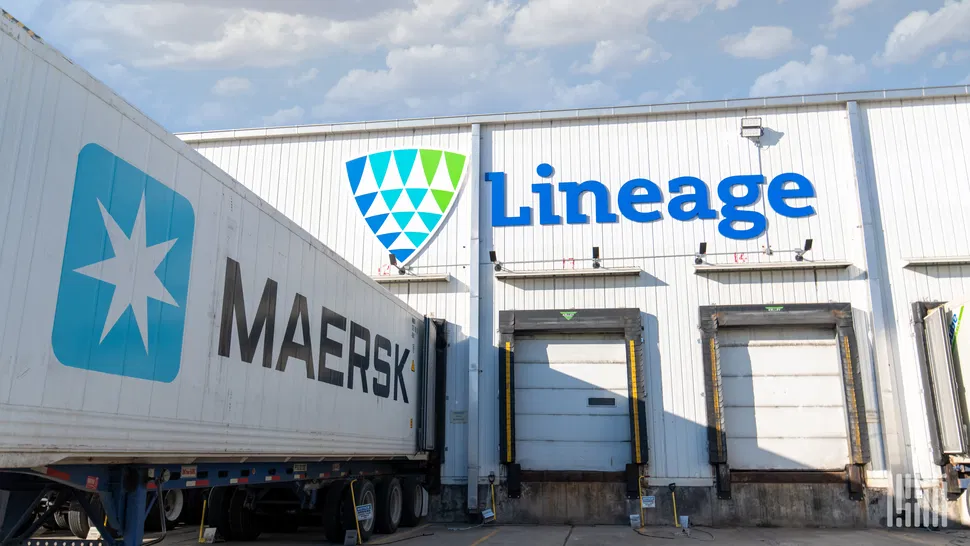Understanding the Impact of Food Prices on Warehouse Occupancy
The current landscape of warehouse operations has been notably influenced by escalating food prices and uncertainties surrounding tariffs. These factors have evidently put a squeeze on customer inventories and altered the dynamics within temperature-controlled facilities. This article delves into these trends while highlighting their potential implications for logistics and distribution strategies.
Tärkeimmät kohdat
Lineage Inc., a prominent player in the cold storage real estate investment trust (REIT) market, has provided insights into how these economic pressures are manifesting in warehouse occupancy rates. During the second quarter of the fiscal year, the company observed a notable dip in occupancy, reflecting broader challenges faced across the sector.
Occupancy Rates After a Rough Quarter
Lineage reported lower occupancy rates, suggesting a significant struggle to maintain storage capacity against a backdrop of high food prices. The key statistics from their recent disclosures illustrate the situation:
| Metrinen | Arvo |
|---|---|
| Net Loss (Q2) | $7 million |
| Consolidated Net Revenue (Year-over-Year Change) | +1% to $1.35 billion |
| Pallets Processed (Year-over-Year Change) | -3% |
| Physical Occupancy Rate | 74.6% |
The Shift in Consumer Inventories
In the face of static demand and high pricing for food products, Lineage’s President and CEO Greg Lehmkuhl emphasized the sustained “demand bouncing along the bottom.” This trend has led the company to revise its annual outlook downwards. The adjustments were not made lightly, as tight inventory levels are making it difficult for facilities to operate with optimum efficiency.
Tulevaisuuden näkymät
Looking ahead, occupancy rates are expected to show improvement in the latter half of the fiscal year. However, this recovery starts from a substantially lower baseline than anticipated. Lehmkuhl also noted some seasonal upticks in demand; nonetheless, these tend to arrive later in the year compared to previous cycles, further complicating logistics planning for stakeholders across the board.
Financial Projections
As a response to these fluctuating conditions, Lineage has adjusted its previously set expectations for Adjusted Funds From Operations (AFFO) guidance. A downward adjustment of $0.20 per share translates to an anticipated range of $3.20 to $3.40 for the annual measure. This reflects a 6% decline from their midpoint estimates, highlighting the repercussions of the current economic climate on their operational landscape.
Industry-Wide Impacts
Despite the challenges faced, Lineage affirmed that pricing remains “competitive but stable.” A 5% sequential increase in revenue per pallet indicates that while demand fluctuates, opportunities for revenue generation still exist through strategic pricing tactics.
Operational Strategies Moving Forward
The company’s plan revolves around focusing on revenue growth, optimizing labor productivity, and managing controllable factors to prepare for an eventual rebound in the industry. By honing these aspects, Lineage aims to set the stage for significant operating leverage once the market stabilizes.
Lineage operates an extensive network comprising 485 facilities and an astounding 3.1 billion cubic feet of temperature-controlled space spanning across Pohjois-Amerikka, Eurooppaja Australia. The company also engages in freight forwarding, customs brokerage, drayage, and truck transportation services, underscoring its versatility in logistics operations.
Päätelmä
As food prices continue to fluctuate and customer inventories tighten, logistics avenues must remain adaptable to mitigate impacts on warehouse occupancy. Current conditions not only affect warehouse operators like Lineage Inc., but ripple across the entire logistics sector, affecting everything from transportation to distribution resilience. For those navigating this landscape, engaging with a logistics partner like GetTransport.com offers a pathway to reliable and affordable shipping solutions.
In summary, the challenges of high food prices are creating significant ripples in the logistics and distribution sectors, complicating operational strategies across the board. Yet, those insights, however illuminating, cannot substitute for hands-on experience. By exploring cargo transportation options through GetTransport.com, one can make informed decisions without breaking the bank or encountering surprises. The platform provides a way to manage logistics needs effectively while emphasizing transparency and affordability. Seuraavaa rahtikuljetustasi varten harkitse GetTransport.comin mukavuutta ja luotettavuutta. Varaa kyyti.

 Impacts of Rising Food Prices on Warehouse Utilization">
Impacts of Rising Food Prices on Warehouse Utilization">